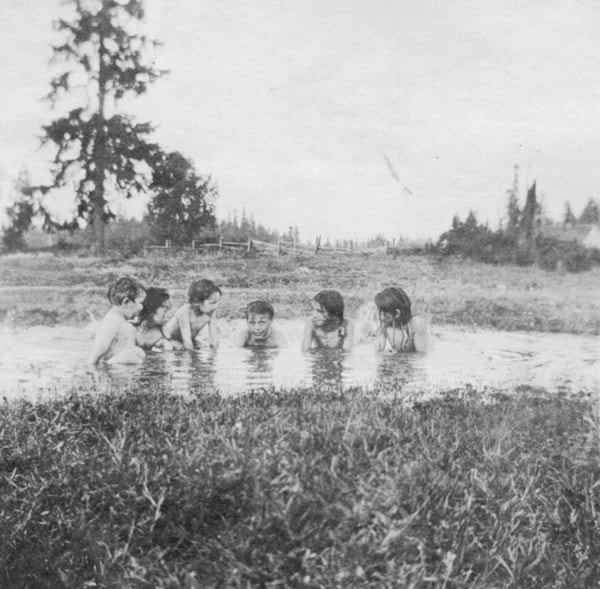Our cool, damp summer has more of us than usual itching and scratching, due to mosquito bites. When we examine our history with these small pests, we have absolutely nothing to complain about.
One of the primary characteristics of the Maple Ridge district is an abundance of water. In advance of human efforts at drainage, the mosquitoes were an annual and much- dreaded plague.
One of our earliest – and certainly the funniest – references to this plague comes from the memoirs of our first school teacher, James William Sinclair. He arrived in 1875 from Victoria and was all of 17 at the time. He had been directed by those who sent him to find William Nelson because Nelson, who was on the school board, could provide him with room and board. 
Here is Sinclair’s account of his first encounter with William Nelson and the mosquito plague:
“He told me to come in the house and have something to eat. I went in and entered a very large front room; the doors were all closed, and there was a huge smudge burning in the room, for the mosquitoes were very bad. I did not know which was the worst, the smoke or the blood-suckers, for after being in the room a few minutes I began to choke and my eyes were streaming with tears.
“I made up my mind I could not endure all this punishment and I would go back to Victoria. That night, a stranger came in and asked Mr. Nelson if he could give him a bed for the night.
After supper we all repaired to the front room. There were several other men there for they had just started to build the River Road. I there met Mr. John Hinch and a man by the name of Welch. In the evening, they began to talk about how bad the mosquitoes were. At this, the stranger who had just arrived joined in. He said, “You gentlemen don’t know what mosquitoes are. When I was on a ship on the Pacific Ocean, a swarm struck our ship and ate every bit of the canvas off the boat”.
Mr. Nelson was taking this all in, as well as your humble servant, for he spoke up and said “Why those same mosquitoes struck our ship.”.
At that, the stranger said, “Impossible, how can you prove that?”
Nelson replied, “I can prove the same mosquitoes struck our ship, for when they came aboard they all had canvas overalls on.
“l thought if these pests were as bad as that I would stay in Maple Ridge and so I remained.”
After that incident, Sinclair would have two more weeks to prepare for school classes as the school was closed because of the mosquitoes.
This was a common and even annual occurrence. The water of the freshet would lie stagnant on the saturated land and breed mosquitoes by the millions. Not only were they an agonizing nuisance, they were a danger to livestock and even children, through loss of blood. Families huddled indoors, coughing and wheezing over smudge pots, to keep the pests at bay. When the Lilley family arrived in 1907, their first home had burn marks on the floors from the smudge pots of previous occupants.
The work to dike, drain and fill all the low areas began with the first settler but it was a long slow process and mosquitoes continued to be an annual plague. The first real relief came with the introduction of DDT in the later 1940s followed by the more effective diking work of the 1950s. Today, we really do have little to complain about.
Val Patenaude is the curator of The Maple Ridge Museum and Archives.
